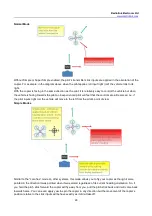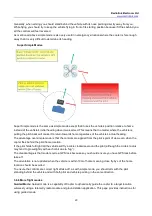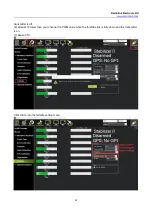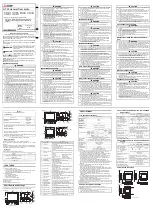
Radiolink Electronic Ltd
39
Allows monitoring of the battery’s voltage and current and triggering a return-to-launch when the voltage
becomes low or the total power consumed during the flight approaches the battery’s capacity.
Allows the autopilot firmware to more accurately compensate for the interference on the compass from other
components.
The 6-pin cable plugs into the 6-pin connector on both the Power Module and Turbo Pix.
Mission Planner Setup
Battery measurement is primarily set up in the
Mission Planner
‘s
INITIAL SETUP -- Optional Hardware --
Battery Monitor
screen.
Enter the properties your module can measure, the type of module, the type of flight controller, and the
battery capacity:
Monitor:
Voltage and Current or Battery Volts
Sensor:
Supported power module, or “Other”
APM ver:
Flight controller (e.g. Pixhawk )
Battery Capacity:
Battery capacity in mAh
The bottom section of the the
Battery Monitor
screen allows you to calibrate the voltage/current
measurement in order to verify that the measured voltage of the battery is correct. You can also set the
Sensor
selection list to
Other
and use the calibration process to configure an “unknown” power module.
To calibrate the voltage reading:
1. Check the voltage of your LiPo battery with a hand-held volt meter or a power analyzer
2. Connect your Turbo Pix to your computer and plug in the LiPo battery
3. Check the voltage through the
Mission Planner
‘s
INITIAL SETUP | Optional Hardware | Battery Monitor
screen or on the Flight Data screen’s HUD or
Status
tab.
















































